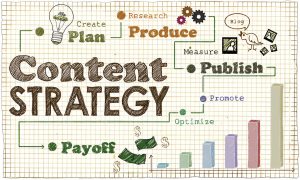Introduction
Content marketing is the strategic approach of creating and distributing valuable, relevant, and consistent content to attract and retain a clearly defined audience. This methodology is crucial in today’s digital landscape, where traditional marketing tactics often fall short.
In this article, we explore how content marketing can significantly impact:
- Lead generation
- Sales growth
- Brand building
- Customer retention
Key takeaway: Content marketing is not just about promoting products or services. It is about delivering value to your audience, educating prospects, and facilitating informed buying decisions. Companies that prioritize relevant content delivery see substantial benefits in terms of brand awareness, demand creation, organic traffic, and trust building.
Key Areas Where Content Marketing Plays a Crucial Role
- Driving Lead Generation and Boosting Sales
Content marketing allows businesses to attract potential customers by providing them with valuable information through various channels such as blog posts, social media content, and videos. By addressing their pain points and offering solutions, companies can establish themselves as industry experts and build trust with their target audience. This ultimately leads to an increase in leads and conversions.
- Building Brand Authority and Fostering Customer Relationships
Creating high-quality content that resonates with your target audience helps in establishing your brand as a thought leader in your industry. When you consistently deliver valuable information that educates, inspires, or entertains your audience, you build credibility and trust. This not only leads to customer loyalty but also encourages word-of-mouth referrals, further expanding your brand reach.
- Leveraging Organic and Paid Channels for Maximum Reach
Content marketing allows businesses to reach their target audience through both organic (unpaid) and paid channels:
- Organic channels: By optimizing your website for search engines (SEO), creating shareable social media content, guest posting on relevant websites, or leveraging email marketing campaigns, you can increase your brand’s visibility without spending money on advertising.
- Paid channels: Platforms like Google Ads, Facebook Ads, or sponsored content on industry websites can help you amplify your content’s reach to a wider audience and generate quick results.
By combining both organic and paid strategies, businesses can maximize their content’s exposure and attract potential customers at different stages of the buyer’s journey.
- Creating Consistency and Building Audience Loyalty
Consistency is key when it comes to content marketing. By establishing a regular publishing schedule and delivering valuable content consistently, businesses can keep their audience engaged and coming back for more. This helps in building a loyal community around your brand who are more likely to convert into paying customers and advocate for your products or services.
- Adapting Traditional Business Approaches for the Digital Age
With the rise of digital technology, consumer behavior has significantly shifted. Content marketing allows businesses to adapt their traditional marketing approaches by:
- Understanding their target audience’s online behavior and preferences
- Creating personalized content experiences based on individual needs
- Leveraging data and analytics to measure campaign effectiveness and make data-driven decisions
By embracing these digital transformations, companies can stay relevant in today’s competitive landscape and effectively reach their target market.
- Understanding B2B Dynamics and Content Strategy Implications
For B2B (business-to-business) companies, content marketing plays a crucial role in:
- Educating key decision-makers about complex products or solutions
- Nurturing long-term relationships with multiple stakeholders involved in the buying process
- Showcasing industry expertise through case studies, whitepapers, or webinars
Understanding the unique dynamics of B2B marketing helps in crafting tailored content strategies that resonate with your target audience and drive meaningful business outcomes.
To gain further insights on the power of content marketing in these areas, you can visit Visuapex Creatives.
1. Driving Lead Generation and Boosting Sales through Compelling Content
Strategic content creation plays a crucial role in attracting high-quality leads for businesses. By creating relevant blog posts, informative eBooks, and engaging social media updates, you can grab the attention of potential customers who are actively searching for solutions that your business offers.
Example: An IT services company might publish a series of white papers on cybersecurity trends. These documents not only show their expertise but also attract decision-makers who want to improve their organization’s security measures.
Content is key in nurturing leads and making sales. Through targeted email campaigns or personalized landing pages, you can lead potential customers through the buying process by providing valuable information at every step. Case studies are a great way to understand this:
Case Study: HubSpot’s inbound marketing strategy uses educational blog posts and free tools to get leads. Once potential customers are interested, automated email sequences send them tailored content that addresses their specific problems, leading to more sales.
Looking at successful content marketing campaigns shows us how content directly affects revenue growth. Take Airbnb for example, they use content created by users to build trust and get more bookings. By sharing guest reviews and local experiences on their website and social media platforms, they not only make their brand more trustworthy but also encourage more people to book with them.
Key Takeaway: Effective content marketing campaigns focus on providing valuable information that meets the needs of the target audience, ultimately driving lead generation and sales growth.
2. Building Brand Authority and Fostering Customer Relationships with Valuable Content Delivery
Consistently delivering relevant content helps establish a brand as a trusted authority in its industry. When you provide your audience with information that addresses their pain points, answers their questions, and offers actionable insights, you position your brand as a go-to resource. This not only enhances brand awareness but also builds credibility over time.
The impact of valuable content on fostering long-term relationships with customers cannot be overstated. High-quality content keeps your audience engaged and invested in what you have to offer. When customers find genuine value in your content, they are more likely to develop customer loyalty and advocate for your brand.
To prioritize relevant content delivery across various channels, companies should consider the following tips:
- Understand Your Audience: Develop detailed buyer personas to identify the needs and preferences of your target audience.
- Diversify Content Formats: Offer a mix of blogs, videos, infographics, and white papers to cater to different consumption habits.
- Utilize Data Analytics: Use analytics tools to track which types of content perform best and adjust your strategy accordingly.
- Consistency is Key: Maintain a regular publishing schedule to keep your audience engaged and coming back for more.
By focusing on these strategies, you can ensure that your content not only attracts but also retains an engaged audience.
3. Using a Mix of Organic and Paid Channels for Maximum Reach
Using both organic channels and paid channels in your content distribution strategy can greatly increase your reach. Organic channels, such as websites, blogs, and social media profiles, offer cost-effective ways to build a long-term audience. Paid channels, like social media advertising and search engine marketing (SEM), provide immediate visibility and can target specific demographics.
Practical Tips for Using Each Channel
Organic Channels:
- Websites and Blogs: Regularly update with high-quality, relevant content to engage visitors. Use internal linking to keep users on your site longer.
- Social Media Profiles: Share content consistently. Engage with your audience through comments and direct messages to build relationships.
- Email Newsletters: Segment your list to send personalized content that resonates with different audience groups.
Paid Channels:
- Social Media Advertising: Utilize targeted ads to reach specific demographics. A/B test ad creatives to determine what works best.
- Search Engine Marketing (SEM): Bid on relevant keywords to appear in search results. Monitor performance metrics and adjust bids accordingly.
The Role of SEO in Optimizing Organic Content Reach
Search Engine Optimization (SEO) is crucial for maximizing the reach of your organic content. By optimizing your website and blog posts for relevant keywords, you can improve your search engine rankings and attract more organic traffic. Focus on:
- Keyword Research: Identify keywords that your target audience is searching for.
- On-Page SEO: Optimize titles, meta descriptions, headers, and content for chosen keywords.
- Backlink Building: Acquire high-quality backlinks from reputable sites to boost domain authority.
Combining organic and paid strategies ensures a balanced approach that leverages the strengths of each channel for maximum reach.
4. Creating Consistency and Building Audience Loyalty through Regular Content
Maintaining a consistent presence with regular content creation is essential for building audience loyalty. When you deliver fresh, valuable content on a regular basis, your audience knows they can rely on you for insightful information. This helps in establishing trust and keeps your brand top-of-mind.
Diversifying content types is another critical strategy. Different audience segments have varying preferences for how they consume content. Some might prefer reading detailed blog posts or white papers, while others may lean towards visual formats like videos or infographics. By offering a mix of content types, you cater to broader audience preferences:
- Blogs: Great for sharing in-depth knowledge and driving organic traffic.
- Videos: Effective in capturing attention and explaining complex topics visually.
- Infographics: Ideal for presenting data and statistics in an easily digestible format.
Establishing an appropriate publishing cadence ensures you remain relevant without overwhelming your audience. Industry best practices suggest the following guidelines:
- Daily or Weekly Blog Posts: Keeps your website updated and improves SEO.
- Monthly White Papers or E-books: Provides in-depth insights and positions your brand as an authority.
- Regular Social Media Updates: Engages your audience on platforms they frequently visit.
By maintaining consistency and diversifying your content, you not only retain existing followers but also attract new ones, thus fostering a loyal audience base.
5. Adapting to the Digital Age: How Content Marketing Transforms Traditional Business Approaches
The internet has changed how sales and marketing work. Traditional methods like cold calling, direct mail, and print ads are not as effective anymore because people now rely more on digital platforms for information and buying decisions. This means that businesses need to adapt and embrace digital technology if they want to stay competitive.
One effective strategy in this new digital landscape is content marketing. Instead of directly promoting products or services, businesses create and share valuable content that educates and entertains their target audience. This can be done through blog posts, social media updates, videos, and other types of content.
Here are some key benefits of content marketing:
- Increased visibility: Creating high-quality content that is optimized for search engines can help businesses rank higher in search results, leading to more organic (non-paid) traffic to their website.
- Better engagement: Interactive content such as quizzes, polls, or contests encourages audience participation and allows for a two-way conversation between the business and its customers.
- Stronger brand loyalty: By consistently publishing useful and relevant content, businesses can build trust with their audience and establish themselves as a go-to resource in their industry.
A great example of this approach is HubSpot. They use their blog to share educational articles and offer free resources like templates or guides to attract potential customers. At the same time, they also send out regular email newsletters with more exclusive content to nurture relationships with existing clients.
This shows how embracing digital trends through strategic content marketing can lead to long-term business growth in today’s world.
6. Understanding the Unique Dynamics of B2B Relationships and Its Implications for Content Strategy
B2B marketing is all about building long-term, trustworthy relationships. The sales cycles are usually longer and more complicated, so a strategic approach to content marketing is necessary. Businesses must nurture leads over extended periods, providing valuable information that is specifically tailored to each step of the buyer’s journey.
Role of Content Marketing in B2B Relationships
- Educational Content: High-quality white papers, research reports, and case studies can educate prospects about industry trends and solutions.
- Thought Leadership: Blog posts and articles that highlight expertise help establish your brand as an authority.
- Customer Stories: Real-world examples and testimonials from existing clients build credibility.
Importance of Personalized Content
Engaging key stakeholders requires personalized content that directly addresses their needs and pain points.
- Awareness Stage: Use blogs and social media posts to create awareness about common challenges and industry solutions.
- Consideration Stage: Offer detailed guides, eBooks, and webinars that delve into potential solutions.
- Decision Stage: Provide product demos, case studies, and tailored proposals to help decision-makers evaluate your offerings.
Personalization ensures that content resonates with stakeholders at different stages, making it easier to move them through the sales funnel efficiently. Effective B2B content marketing doesn’t just inform; it builds trust and fosters stronger business relationships.
Building a Successful Content Strategy for Long-Term Impact
Developing a comprehensive content strategy involves aligning efforts with the target audience’s needs and journey stages. This systematic approach ensures the delivery of relevant and engaging content that resonates with your audience, fostering stronger connections and driving conversions.
Step 1: Defining Target Audience Personas and Key Content Themes
Start by creating detailed target audience personas. These fictional representations of your ideal customers help you understand their needs, preferences, and pain points. Consider factors such as:
- Demographics (age, gender, location)
- Professional background (industry, job role)
- Behavioral traits (buying habits, interests)
Once personas are defined, establish key content themes. These themes should address the common challenges and interests of your target audience. For instance:
- Educational Content: Guides, how-tos, tutorials
- Industry Insights: Trends, research reports
- Product Information: Features, benefits, case studies
Step 2: Mapping Content Types to Different Stages of the Buyer Journey
A well-mapped content strategy ensures that each piece of content serves a specific purpose at various stages of the buyer journey:
○ Awareness Stage:Goal: Attract attention and generate interest.
○ Content Types: Blog posts, social media updates, infographics
○ Interest Stage:Goal: Educate prospects and build trust.
○ Content Types: E-books, webinars, whitepapers
○ Decision Stage:Goal: Facilitate informed purchasing decisions.
○ Content Types: Product demos, case studies, testimonials
By meticulously planning and executing a content strategy that aligns with these stages, businesses can effectively guide prospects from awareness to decision-making while fulfilling their informational needs at each step.
Utilizing Technology to Drive Content Marketing Excellence
Purpose-built software is essential in streamlining content creation, distribution, and performance tracking for your marketing efforts. These tools can help automate repetitive tasks, making your team more efficient and freeing up time to focus on creating high-quality content.
Key features to look for in content marketing tool suites include:
- Content Planning and Calendar: Helps organize and schedule content across various channels.
- SEO Optimization: Tools that analyze keywords, backlinks, and site performance to improve organic reach.
- Content Creation and Editing: Built-in editors with templates and collaboration features streamline the content creation process.
- Distribution Management: Automates sharing on social media, email campaigns, and other platforms.
- Analytics and Reporting: Provides insights into content performance metrics like engagement rates, traffic sources, and conversion rates.
Examples of popular content marketing tools include HubSpot for its all-in-one marketing suite, SEMrush for advanced SEO analytics, and Buffer for social media management. Leveraging these tools can significantly enhance your content marketing strategy’s effectiveness by providing actionable insights and automating complex workflows.
Conclusion
In the digital age, it is crucial for businesses to embrace content marketing as a key strategy for success. By creating, distributing, and optimizing compelling content, you can not only enhance your brand but also achieve important goals such as generating leads, driving sales, and retaining customers.
Here are some ways you can make the most of content marketing:
- Educate and inform your audience, helping them make informed buying decisions.
- Build trust and loyalty through consistent and valuable content delivery.
- Maximize reach and engagement by effectively using both organic and paid channels.
- Adapt to the digital landscape, ensuring your marketing strategies remain relevant.
Content marketing is more than just a tactic; it’s a complete strategy that has the potential to transform your business when implemented effectively. So start leveraging its power today to take your marketing efforts to new heights.
FAQs (Frequently Asked Questions)
Content marketing is the strategic approach of creating and distributing valuable, relevant, and consistent content to attract and retain a clearly defined audience.
Strategic content creation plays a crucial role in attracting potential customers, nurturing them through the sales funnel, and ultimately converting them into paying customers.
Consistency is key in content marketing as it helps in building audience loyalty, establishing brand authority, and fostering long-term customer relationships.
Developing a successful content strategy involves defining target audience personas, mapping content types to different stages of the buyer journey, and utilizing technology to streamline content creation and distribution.
The internet has changed how sales and marketing work. Traditional businesses need to adapt by leveraging content marketing to reach and engage with their target audience effectively.
Engaging key stakeholders in B2B relationships requires personalized content that addresses their specific pain points, challenges, and needs.




